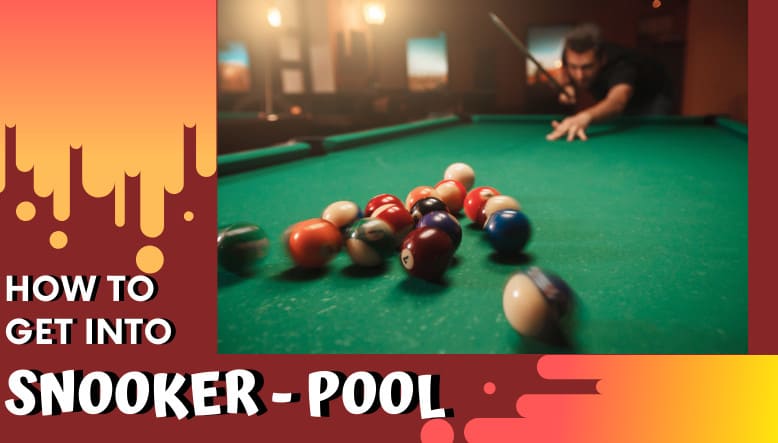
Snooker and pool are very different games which just happen to look broadly similar. In the UK, snooker is still the most popular of the two sports and it probably has the higher international following, but pool is big in the U.S. and Canada and is played quite a lot in other places.
Finding a place to play snooker and/or pool
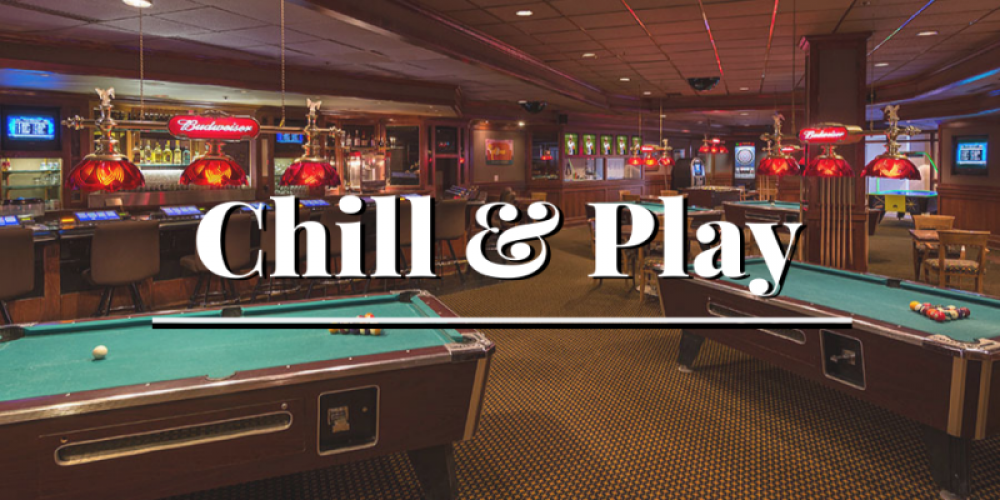
In the UK, finding a place to play snooker or pool is usually as easy as walking down to your local pub. Pubs have long had snooker tables, but these days it’s increasingly common for them to have either a pool table as well or to have a pool table with equipment for snooker available. Larger towns and cities will often have dedicated facilities to play snooker and/or pool.
If you want to take a more formal approach there are snooker associations in England, Wales, Scotland and Northern Ireland.
Alternatively, you might want to look at getting a snooker or pool table for your own home. Even if you don’t have room (or budget) for one of the glorious tables you see on TV, or even the commercial-grade ones you see in pubs and snooker/pool halls, the quality of the folding tables has really improved over recent years. They might not look as pretty or play quite as well but they are pretty decent, much more affordable and far easier to store.
The one issue you might face with folding tables (at least if you’re playing at all seriously) is that they need to be level and you might find your floors are not. Look for tables with adjustable legs and consider putting some tape on a designated corner so it’s easy to see which way round your table should go.
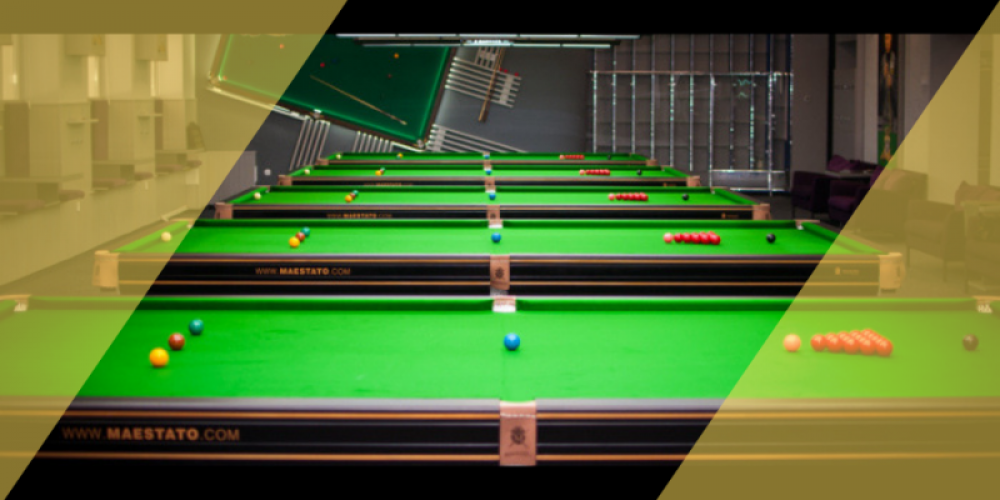
When fully opened, standard European snooker tables are 12’ by 6’ so about 4M by 2M, standard U.S. snooker tables are 10’ by 5’ so about 3M by 1.5M. Pool tables come in various sizes and the smallest regular size is 6’ by 3’ so about 2M by 1M. You can get tables which are smaller than this, in fact you can even get “tabletop” games, but these are really toys and while they can be fun, you’re not going to learn any proper skills.
If you’d like to learn both snooker and pool but you only have room for one table at home, then it makes sense to buy a pool table and then use it for both games. It won’t give you quite the same snooker experience because the pockets are bigger, but it will be good enough for practicing at home (or just having fun with your friends).
Snooker and pool tables are both investment purchases, but even so, you can pick them up for far less than you would expect to pay for the equipment for some other sports, e.g. golf. You can also get some good deals on the pre-loved market when people decide to upgrade their entry-level tables for tables they can use for more serious play.
Snooker and pool balls
There are two main types of ball used in both snooker and pool. These are known as standard balls and Aramith balls.

Standard balls, as their name suggests are the ones which come with every snooker or pool table (unless the retailer specifies otherwise). Quite bluntly, they’re mass-produced, cheap and cheerful. They do the job, but the hardened plastic shell has a slightly different response than the Aramith balls and it also creates more friction as it rolls, so it wears out your table covering more quickly.
Aramith balls are made of resin and not only do they look the part (you can see the difference in quality), they feel the part, which is why they are used in competition. They are more expensive to buy but they will last longer and they will also be gentler on your table covering.
Setting up a snooker table
In a “full” snooker game, there are 15 red balls plus 6 colour balls (yellow, green, brown, blue, pink, black) and a cue ball. Some smaller snooker tables only use 10 red balls plus the 6 colour balls and the cue ball.
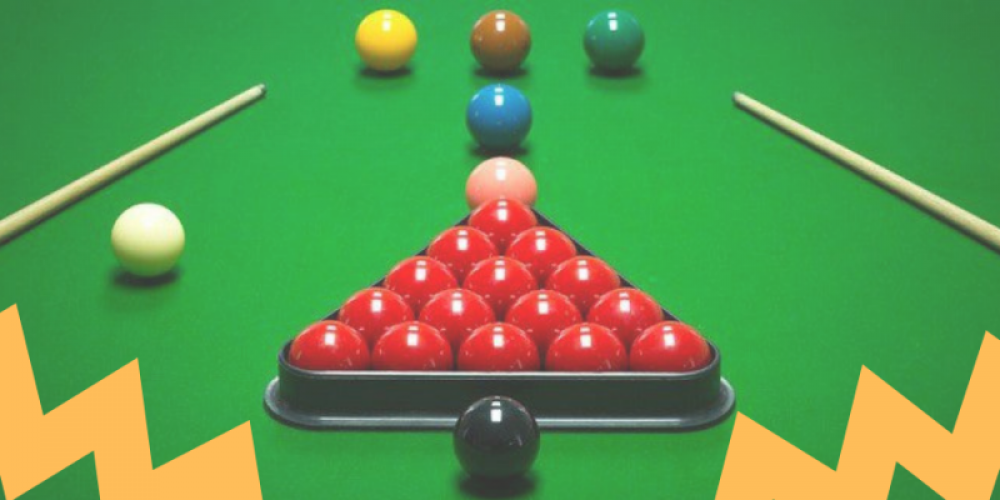
Probably the easiest way to see how to lay out the balls on a snooker table is just to look up a picture of a snooker table with the balls on it and see where they all go. You can set up the red balls by hand, but it’s usually a whole lot easier to use a type of frame called a triangle. You can also set up the colour balls by eye, but it often makes sense just to put a chalk mark on the felt to show where they should go.
Rules and gameplay for snooker
This section will give you a summary of what you need to know to play snooker for fun. If you want to be able to follow people who are taking it more seriously, then you might want to learn a selection of snooker terms and also learn the formal match rules.
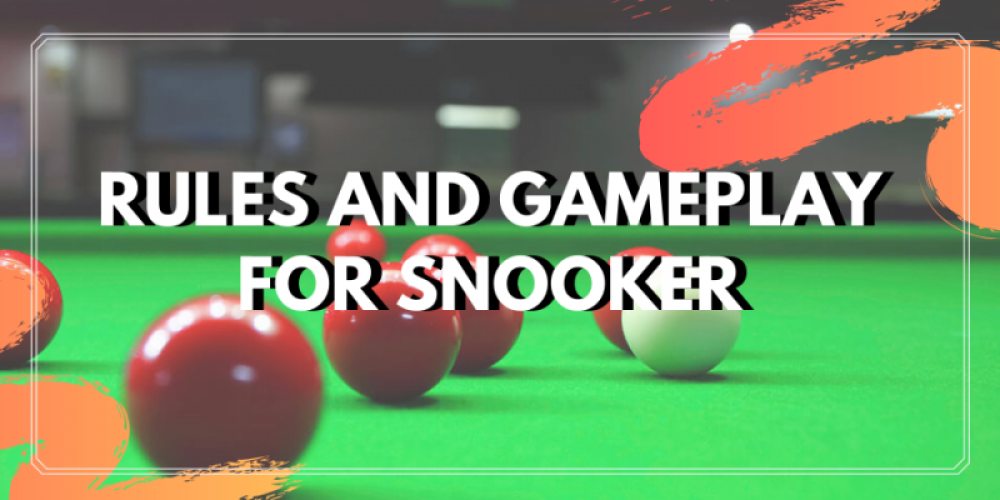
In principle snooker is played between two people although when playing casually, it’s common for there to be three or four people sharing a table and taking turns.
The game opens with one player “breaking” the table. Basically this means that the cue ball has to connect with a red ball, but, in this one instance, it only has to connect, it does not have to send the ball into a pocket (or “pot” it).
The player must then pot a red ball without the cue making contact with any other ball on the table before the target ball is in the pocket. If he succeeds, the red ball is removed from the table and the player may pot a coloured ball of his choice, but he must name the ball he intends to hit before he takes his shot and again the cue ball must not make contact with any other ball on the table before the ball is in the pocket.
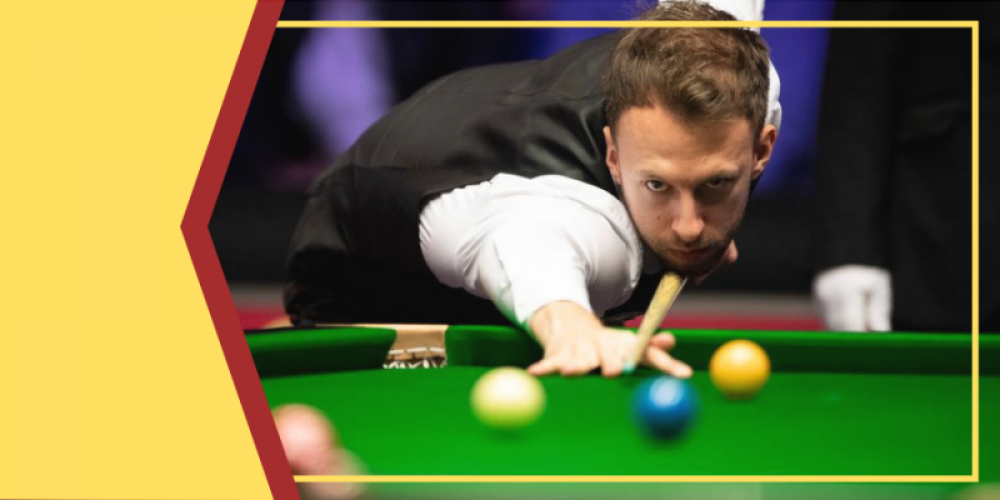
If he succeeds in potting the coloured ball, it is returned to the table, preferably in its original position. When a coloured ball cannot be placed back in its original position (because that has become taken by another ball), then it is put in the position of the ball with the next-highest value (and if that is not available, the ball of the next-highest value) and so on.
Here is a list of the ball colours used in snooker and their values:
- Red-1
- Yellow-2
- Green-3
- Brown-4
- Blue-5
- Pink-6
- Black-7
The player must then pot another red ball followed by a coloured ball and so on until there are no more reds left. When all the reds have been removed from the game, the player must “clear the table” by potting the coloured balls in order of their value so: yellow, green, brown, blue, pink, black.
A player stays at the table until he either fails to pot one of the balls or commits a foul, of which the two main ones are either potting the wrong ball or the cue ball hitting another ball before the target ball has fallen into the pocket. It’s fine if the cue ball makes contact with other balls after the target ball is in the pocket, this often happens and it would probably be virtually impossible to play without it happening.
Having the cue ball “jump” on the way to the target is also a foul but there is some leeway here. Basically, beginners who make genuine errors are unlikely to be penalized for this, but experienced players most certainly will, so be aware that this strategy is forbidden in match snooker, even if it looks cool as a “trick shot”.
If a player commits a foul, the penalty for that foul is added to the opponent’s score and the opponent can then choose to take over the table or insist that the first player continue to play. In the first case, the new player starts by potting a red and carries on as described above. In the second case, the original player picks up from where they were before (or tries to).
The value of a foul is the highest out of four options: the value of the ball the player intended to hit, the value of all the balls involved in the foul or four points. For the purposes of calculating the value of a foul, the cue ball is worth four points, so if a player accidentally pots a cue ball, that’s a four-point foul, whereas if they accidentally pot a cue ball and a black ball, it’s 11 points and so on.
The game ends when all the balls have been potted and the player with the greatest number of points is declared the winner.
Setting up a pool table
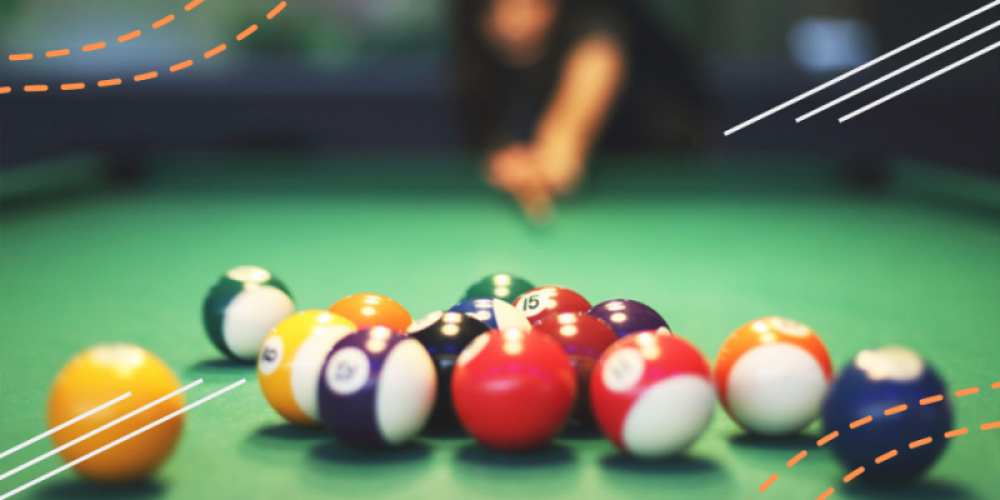
In theory there is English pool and American pool and in theory there are several variations of American pool. In practice, when the average person says “pool” they mean American pool, 8-ball version, which, in spite of the name, actually uses 15 balls.
A standard American pool set will have 8 balls in solid colours and seven balls with stripes (plus a cue ball). The solid balls are numbered one through eight and the striped balls nine through fifteen. As with snooker all the balls are the same size, although American pool balls are bigger than English snooker balls (insert joke of your choice here).
There are lots of “non-standard” but equally valid and playable sets of American pool balls. Essentially the fact that the balls have numbers means that manufacturers can, in principle, use whatever colours and designs they like on the balls, it just so happens that the solid/striped option is by far the most popular one.
Racking a pool table for 8-ball is fairly simple. All you need to do is put the triangle frame in the right place, which will probably be marked on your table but if not, just look up a picture. After that, the easiest approach is usually just to put in all the balls at random and then arrange them so that the eight ball is in the middle of the third row, meaning that it is in the exact centre of the frame. Then make sure that there is a solid ball in one of the bottom corners and a striped ball in the other (it doesn’t matter which ball is in which corner).
Rules and gameplay for 8-ball pool

In spite of the name, 8-ball pool is actually played with 15 balls. The game takes its name because its object is to pot the 8 ball, which must be done last.
Basically, one player is assigned balls 1-7 (which are usually solid colours) and the other balls 9-15 (which are usually striped). Each player must attempt to pot “their” balls before the other player so they can then pot the 8-ball.
Some versions of the game use a “call shot” rule, according to which a player must state what shot they intend to play, although even here “obvious” shots are not expected to be called (although it never hurts to be on the safe side).
A game starts by players tossing a coin and deciding who is going to “break the table”, essentially use the cue to scatter the balls. For a break to be legal a player must either pocket a ball, or send at least four numbered balls to the rail. If he fails to do this then his opponent can either take over the table “as is” or reracking the balls and either breaking himself or having his opponent break.
Once the table is legally broken, the player who makes the break decides whether they want to play the solid balls or the striped ones.
After this, the striking player must hit one of his group of balls first and also either pocket a numbered ball or cause the cue ball or any numbered ball to contact a rail.
As long as the player continues to do this, they own the table and will ultimately pocket the 8-ball and win the game. In general, however, they will reach a point where they are unable to play a legal shot and their opponent will take over. The game ends when the 8-ball is pocketed and the player who pockets the ball is the winner.
Although the rules and basic gameplay for 8-ball pool are much simpler than for snooker, which can make it easier for beginners to pick up, at a serious level, the game is both stimulating and rewarding. A full explanation of 8-ball pool strategy is way outside the scope of this article but the basic idea is that you actually want to keep as many of your balls on the table as possible (to block your opponent), until you have them in a place where you can “run” (clear) the table.
Developing your game of snooker or pool

The basic approach to learning snooker is much the same as the basic approach for learning pool. To begin with you want to concentrate on learning the right stance, the basic strokes and the fundamentals of strategy.
Once you reach intermediate level, you will focus on really getting to grips with the cue ball and how it works. This is basically a stage of developing muscle memory so practice, practice, practice and then practice some more. Once you can do what you need to do, then you need to focus on doing it, in other words, cutting out unforced errors.
At this stage you will be a very decent player and after this, it’s a question of how far you want to go, which basically means, how much you want to practice and how much strategy you want to learn.
In short
Snooker and pool have much less of a fitness element to them than other sports, in fact some people might question whether they should be classed as sports at all. It’s true that if you really want to keep fit, you’ll probably need to take some other form of exercise (which many snooker and pool players do, especially at the upper levels). At the same time, however, it’s also true that both snooker and pool need excellent coordination and finely-tuned motor-skills.
In simple terms, while snooker and pool might be fairly gentle exercise for the body, they’re both great workouts for the brain and very sociable. They’re also much more affordable to learn and play than many other sports but if you play competitively the financial rewards can be very compelling.






![Best Home Gym Mirror – [Full Buyer’s Guide & Review]](https://fitnessauthority.co.uk/wp-content/uploads/2021/04/Best-Home-Gym-Mirror-800x400-1.jpg)






